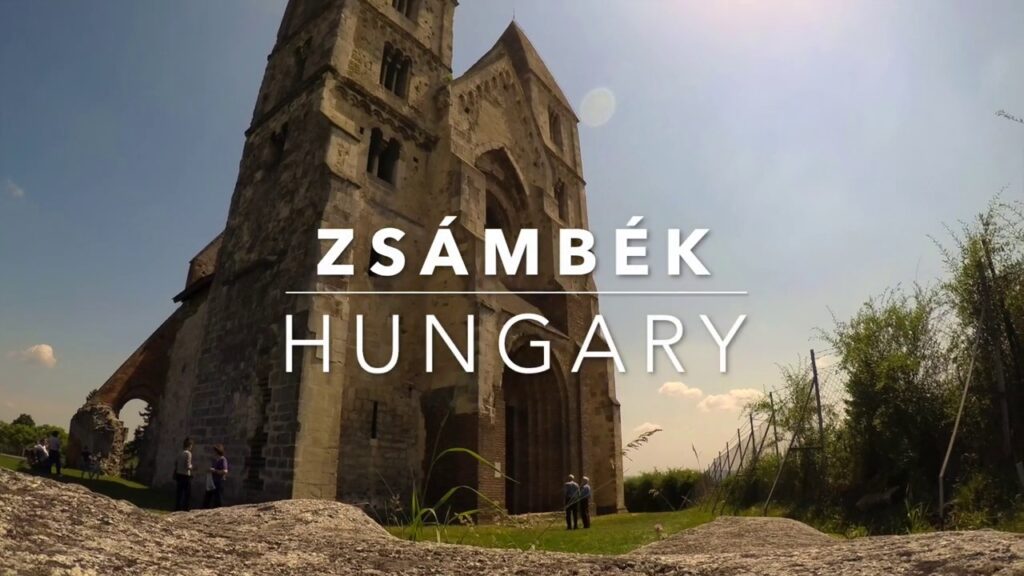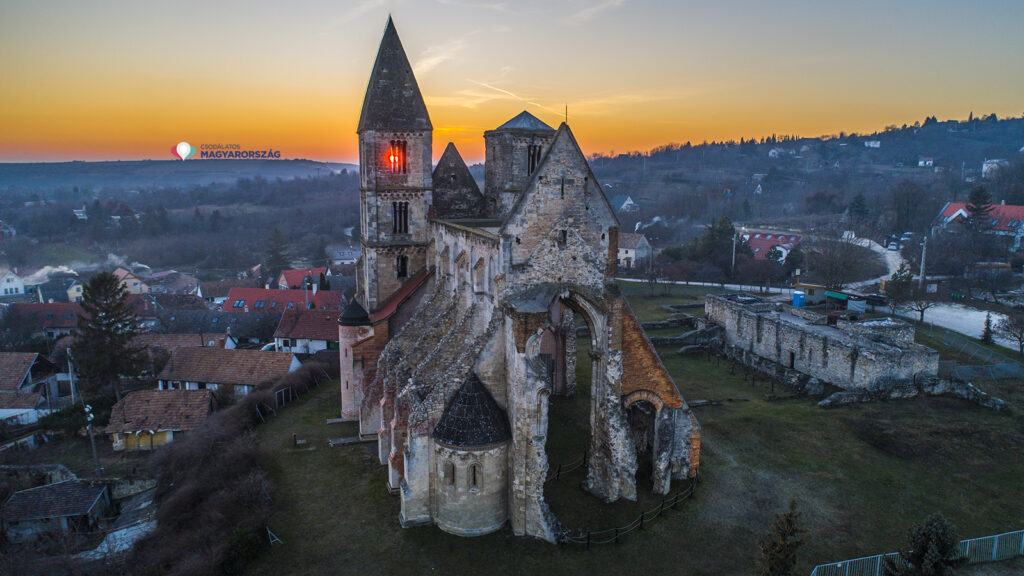Zsámbék is a town in Pest County, in Hungary.
Sights
- Premontrei monastery ruins Remains of a three-aisled premontrei basilica and monastery. It was built in the 13th century (1220-34) in late Romanesque style. It burned down in the 15th century and thencame tothe Paulists , whorebuilt it in theearly Gothic style. In 1763 it was destroyed by the great Komárom earthquake. Currently, the interior of the ruin can also be visited. A stone storehouse can be seen in the vaulted hall of the former monastery. Monument.
- Zsámbék Castle or Zichy Castle. Accompanied by the second wife of Béla III (1148-1196), the French Capet Margit, the knight Aynard received Zsámbék as a gift and built a stone castle, which served as the basis for the Zichy Castle built in the 1700s. After the expulsion of the Turks, the castle and manor were bought by Count István Zichy in 1689 for 30,000 forints from King Leopold I, and then inherited by his son, Peter. The chapel of the castle was consecrated in 1716 in honor of St. Francis Xavier. From the Zichy family, the Crown was taken over by the Crown, and in 1904 it was bought by the Sisters of Mercy (Sororum Caritatis a Sancta Cruce) named after the Holy Cross of Switzerland.
- Turkish fountain. According to previous assumptions, the Turkish well preserves the memory of the Turks who used the castle of Zsámbék as a border fortress from 1541 to 1689. The drinking water of the village was carried from here until the end of the 1960s, when the dwarf waterworks was built. The spring water feeds the lakes of the Convent Garden, then, leaving the settlement, it flows into the Békás stream. It has been a monument since 1953.
- Convent garden. In 1908 it became the property of the Crusaders. The walled park with a lake, trees and winding roads was the prayer area of the nun candidates, the site of their medical walk. It has been a monument since March 2009.
- Baroque church. With the financial help of Miklós Zichy, the single-nave Catholic church was built in 1752, over three years. Károly Bebó (Zichyék’s construction supervisor, sculptor) completed his interior in 1754. Above the gate you can see the double coat of arms of the Zichy and Berényi families and a statue of St. Vendel in a semicircular booth. In the church garden, the work of the parish priest József Gál from Zsámbék in 1813, a statue depicting St. John of Nepomuk , welcomes the visitors. It has been a monument since 1958. Its clockwork, bell, and organ were recently renovated with the help of the Wettenbergs. In summer , it hosts organ concerts on weekends as part of Premontrei evenings .
- Plague statue (Immaculata). In 1739, Miklós Zichy erected the Baroque statue to commemorate the retreat of the plague that struck Zsámbék. Here, half of the population, 828 people, fell victim to the deadly disease. It is one of the first plague statues in Hungary. The village has a vomited, less esteemed memory, in need of protection and restoration.Folk house with relief in St. Vendel
- Lamp Museum. Ferenc Borus’s private collection, opened in 1979 , shows about 1,200 lighting fixtures from the 1750s ; from candlesticks to the kerosene lamps of quite a few world-famous porcelain factories. The collection was included in the Guinness Book of Records in 1995 .
- Sundial school. The two-story school was built in 1791 and served until 1983. József Gungl, a conductor and composer of Hungarian origin, studied here. A special monument of the architecture of the age, it has received a cityscape rating from the monument inspectorate since 1983.
- Country house. It was built around 1740 by Melchior Keller, one of the area’s famous livestock keepers. The characteristic feature of the building is the relief depicting the façade, the patron saint of the shepherds, St. Vendel , which makes it recognizable from afar. A local history exhibition awaits those interested, along with a collection of painted German peasant furniture. One of the oldest and most valuable country houses in Hungary, the Szentendre open-air museum would have demanded it as well. [19]Monument .
- Magyar utca 1. Classicist style building, residential house from the first half of the 19th century, stone wall leading to the Turkish well. It has been a monument since 1958.
- Józsefváros cellar area. In a picturesque environment, the atmosphere of the former cellar world is evoked in the densely populated area of the settlement. This memorial park, which once housed 70 cellars, will be a memorial park for the Germans who have lived Zsámbék for centuries. Landscape rehabilitation and cellar construction are currently underway. It has been a monument since 2006.The ground-based US Air Defense Weapon Museum is not a missile base Zsámbék – Zsámbék Theater and Art Base , in July 2011, George Gabor’s photo
- Zsámbék Summer Theater International Cultural Festival The series of events in Zsámbék Saturdays since 1995 and since 1983
- Missile base. Monument. It was a former Soviet missile base that operated until the 1990s and then in the 2000s under the auspices of the Zsámbék Basin Tourism Association into a cultural (theatrical and artistic) center and museum. The latter mainly presented the air defense equipment of the Hungarian People’s Army , but there were also World War II equipment , but in 2015 the Ministry of Defense started transporting its military artefacts with the aim of presenting them at other exhibition sites. The removal has so far taken place only in small parts, so many military equipment can still be seen today. The exhibition is open periodically from April to October, every Saturday from 10am to 6pm. Guided tours, groups can also enter the local Touinform office by appointment . The area of the former missile base is now also a monument and a nature reserve. In recent years, it has also become a venue for festivals, and there are plans to establish a Military Cultural Center mainly for young people.
- Zsámbék Theater and Art Base – one of the highlights of the Zsámbék Summer Theater Festival
- Air Defense Museum ,
- Heroes in the air and ground aeronautical archeology exhibition
- Watermill. One of the few industrial monuments in Zsámbék, next to the road to Herceghalom , is the remains of a watermill built in the 18th century.
- From the end of November 2007, the local government provided Zsámbék.Free free internet, which is uniquely available in Hungary to the majority of the inhabitants of the settlement. For this, three 2.4 GHz 802.11b WiFi hotspots were installed (on the neck opposite the officers’ houses and the other two on the primary school antenna mast), which were operated by a client operating in the immediate vicinity of the transmitters (such as a laptop) or by a fixed outdoor antenna. and can be used with direct view. According to a 2008 description, access was maximized at 256 Kbps and 32 Kbps download and upload speeds, which could be used for up to 8 hours per day.


